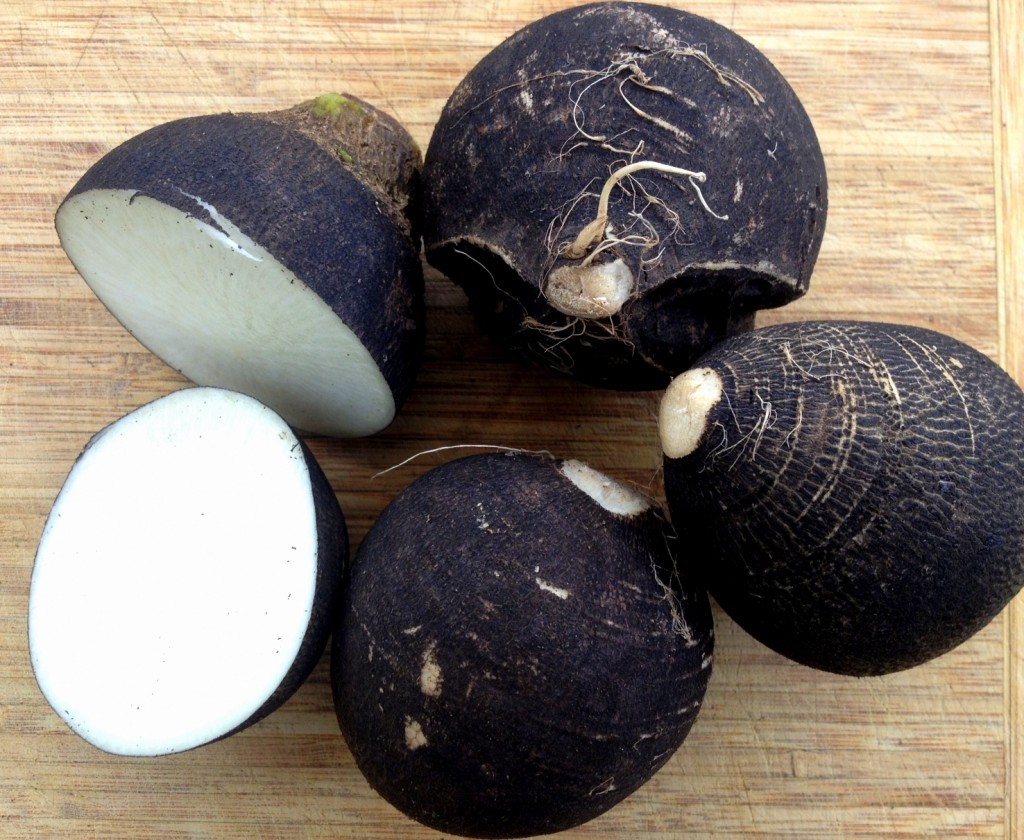01 Nov The Black Radish: From ancient Egypt to Blooming Glen
In this week’s share and on our market stands you’ll see a few different winter radishes: daikon, watermelon and one you might not be familiar with- the black radish. The black radish, or round black spanish type, is a variety hailing from eastern Mediterranean countries. It has a history as both a food and a medicine that goes back thousands of years in Egypt, Greece, Rome and China. Egyptian tomb illustrations from 2000 BC are thought to show black radishes and it was perhaps the food of the builders of the ancient pyramids. High in Vitamin C, they are known for their ability to fight off infection and promote healthy digestive function. In Russia, the black radish has long been used in the treatment of thyroid problems and imbalances.
The black radish has a black skin, ivory flesh and a crisp dry texture with a pungent earthy flavor. With its soaring heat (it can be very hot!), the black radish is recommended grated raw as a substitute for horseradish. It’s also delicious roasted. A popular German way to enjoy these long-storing radishes throughout the winter is sliced, sprinkled with salt then rinsed after about 10 min. to remove some of the bitterness, and eaten on rye bread with a dark beer!
Post and photos by Tricia Borneman, Blooming Glen farmer and co-owner.







Sorry, the comment form is closed at this time.